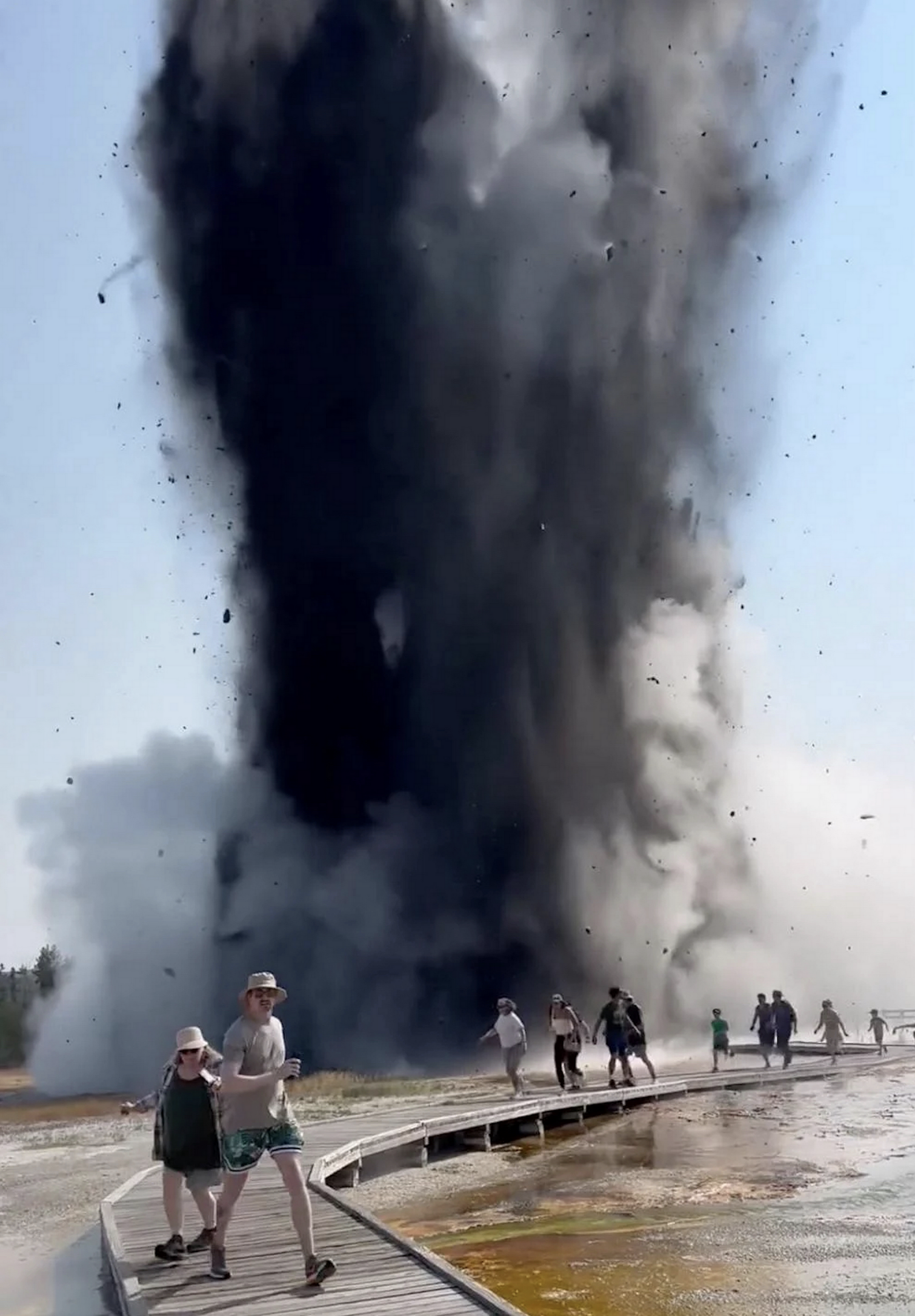Biscuit Basin thermal area explosion not atypical for Yellowstone

Nobody hurt in thermal explosion that took out a boardwalk, sent debris into air in Yellowstone National Park.
JACKSON —- On Tuesday, nobody was seriously injured when Yellowstone National Park was rocked by an explosion that sent debris hundreds of feet in the air and damaged a boardwalk in the Biscuit Basin.
The explosion wasn’t the result of a human accident or malice.
Instead, it was a natural event — a hydrothermal explosion, specifically — that caught a handful of tourists clad in bucket hats and Converse sneakers off guard.
Around 10 a.m., terrain typically characterized by a few, slowly gurgling pools, flowing, sulfuric water and colorful thermophilic bacteria changed rapidly. A blast of steam ripped forth from Yellowstone’s subterranean plumbing, sending dirt and water into the air.
Some people stopped and started taking videos on their phones as the black cloud rose. Then, rocks started falling from the sky. Onlookers took the advice shouted by Vlada March, who recorded the scene.
“Run, run, run, run, run, run,” March said in a video posted to Facebook.
March’s video was quickly and widely distributed on groups like Yellowstone Insiders Hub. March said the boardwalk was destroyed, and her mom was hit by debris. But everyone else was safe.
“Unbelievable and grateful to be alive,” March wrote.
What specifically exploded is unclear.
But, in a statement, Yellowstone officials indicated that the blast originated near the Black Diamond Pool, one of three prominent thermal features just across the Firehole River from the Biscuit Basin parking lot.
“Something like this usually happens a couple times a year in Yellowstone, often in the backcountry so they go unobserved,” said Mike Poland, the scientist-in-charge of the Yellowstone Volcano Observatory.
“These things can happen somewhat randomly,” Poland added. “They are episodes of water flashing to steam underground. Sometimes they can be triggered by earthquakes. Often they are just the plumbing system underground. It’s the randomness of the hydrothermal system.”
There was no earthquake associated with Tuesday’s explosion, he said.
Still, Poland said the explosion Tuesday afternoon highlights the need for better monitoring in geyser basins. Earlier this year, the Volcano Observatory recorded a similar explosion in the Norris Geyser Basin that left a small, 1- to 2-meter crater surrounded by fragments of silica sinter and disrupted earth. Scientists determined the blast happened around 3 p.m. April 15, a few days before most park roads opened. The blast was about 160 feet from a boardwalk but not strong enough to eject debris that far.
Tuesday’s explosion was different, covering the boardwalk and guests in debris.
The Volcano Observatory’s instruments at Old Faithful detected the explosion. But those instruments are about 2 miles southwest of Biscuit Basin. Poland said the incident highlights the need to install more monitoring technology in geyser basins. Those devices would identify otherwise unnoticed explosions, and detect subterranean activity that could precede a large, impactful explosion like Tuesday’s.
“That is something we have pointed out as a need,” Poland said. “We need more monitoring stations.”
Yellowstone did not respond to questions before press time about whether it plans to install more.
Hydrothermal explosions happen when water flashes to steam underground. Geyser eruptions are similar, but the force of the subterranean state change has somewhere to go. Explosions blow the lid off the earth.
The most recent hydrothermal explosion in Biscuit Basin occurred in May 2009. The Porkchop Geyser in the Norris Geyser Basin exploded in 1989. Yellowstone houses the largest crater from a hydrothermal explosion on Earth: Mary Bay in Yellowstone Lake, which is 1.5 miles across and 13,000 years old.
While Yellowstone sits on a dormant volcano, Poland said the explosion is not evidence of volcanic activity.
“This is how hydrothermal systems work,” he said. “This is an underappreciated hazard in Yellowstone.”
This story was published on July 24, 2024.







